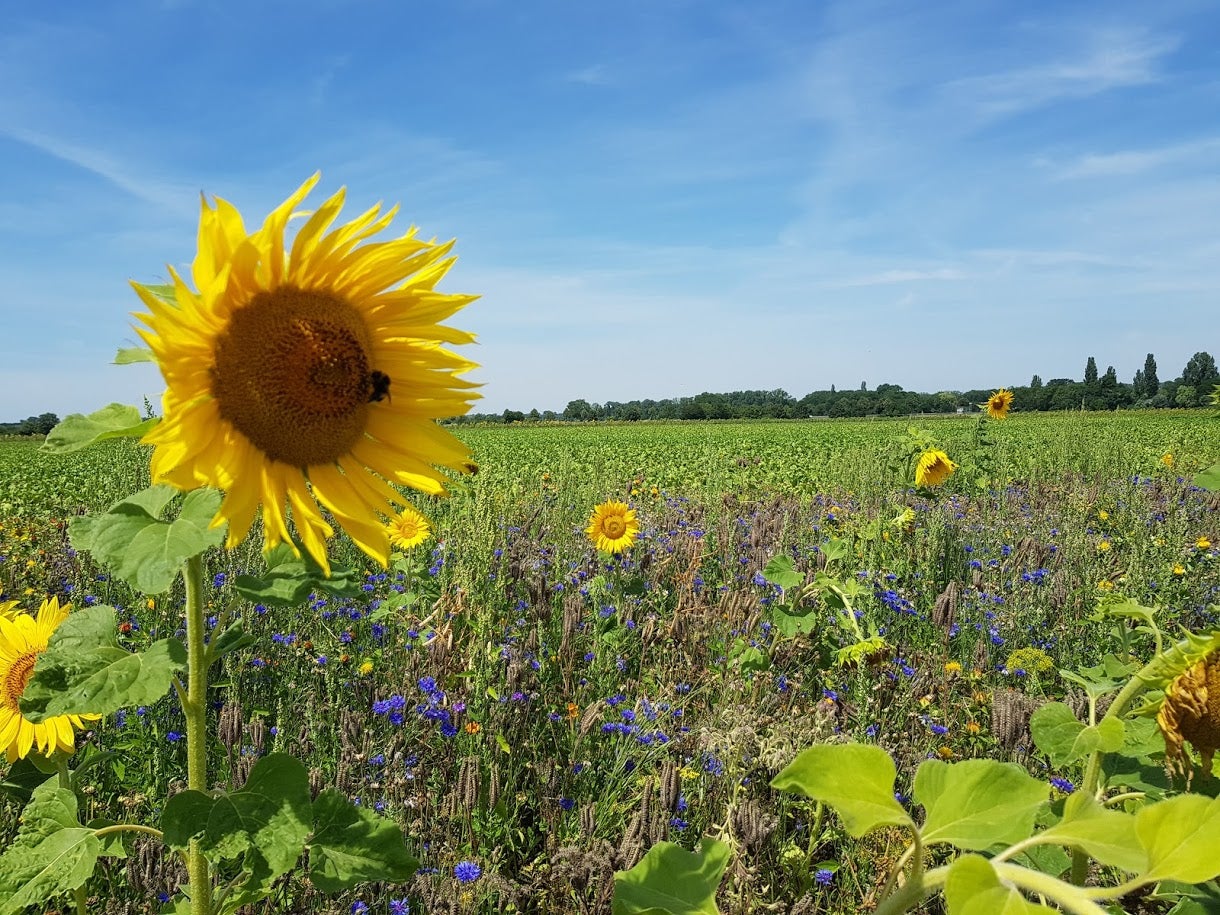
It really is no exaggeration to say that nature – and by extension, the human race, is in crisis. A United Nations report[i] released in 2019 issued a damning assessment on the health of all of earth’s natural life-support systems. It warned that about 1 million animal and plant species are at risk of extinction from everyday human activity within decades – a rate tens to hundreds of times higher than the average over the past 10 million years.
The report, described as the most comprehensive of its kind, revealed the extent to which all of the world’s natural ecosystems from coral reefs to tropical rainforests and grasslands are undergoing rapid decline to the detriment of the future functioning of our economies, livelihoods, food security, health and quality of life worldwide.

Discover B2B Marketing That Performs
Combine business intelligence and editorial excellence to reach engaged professionals across 36 leading media platforms.
The scientists that worked on the report called the findings “ominous” and said nothing short of transformative action would be required across economic, technological, social and political factors to halt the full-scale collapse of the earth’s biodiversity and put nature on a vital path to recovery.
Fostering biodiversity in farming
The fact that not one but two historic deals to save nature have been announced at critical United Nations conferences just months apart – the COP15 30 x 30 biodiversity framework[ii] announced last December and the High Seas treaty[iii] passed in March 2023 – shows that the world’s nations are at least finally recognising the high stakes of not making urgent changes.
Farmers and food companies are in the eye of the storm.
The good news is, according to the World Economic Forum, that regenerative farming solutions and climate-smart technology could actually put farmers in a position where they are leading the charge in preserving and actively fostering biodiversity. An optimistic WEF[iv] report published last year suggested that if an additional one fifth of farmers adopted climate-smart agriculture, by 2030, the EU could reduce its annual agricultural GHG emissions by 6%, improve soil health and even boost farmer incomes by between 2 billion euros and 9 billion euros annually.
The Sugar Division of the Südzucker Group, an integrated group of companies which focuses on plant-based solutions for food, animal feed and many different non-food applications, is one food business keen to play a big role in unlocking this potential and helping to find the right balance between feeding a growing population and protecting our wildlife, ecosystems and resources that is fundamental for human existence and planetary health.
Kevin Schopp, head of B2B marketing, Sugar Division, Südzucker says: “We see it as our responsibility as a leading provider of food ingredients, like beet sugar and sugar specialties, with close ties to agriculture, to play a role in fostering biodiversity in our local ecosystems. That’s why we combine our infrastructure with the scientific know-how of internal and external experts to proactively work on solutions that have an actual, lasting effect.
“It is our goal to contribute to a more pleasant and sustainable world and promote biodiversity in our natural ecosystems, together with our farmers.”
Bringing back wild bees, birds and insects with flower strips
Since 2018, the Südzucker Sugar Division has used its agricultural research farm in Kirschgartshausen, Germany in cooperation with the Institute for Agroecology and Biodiversity to pioneer research on effective measures to foster biodiversity. One major focus has been on assessing the impact of flower strips on beneficial insects, pests, pollinators as well as birds and other animal species.
Between 2018 and 2020, single-year and perennial flower strips with a width of 12 metres were integrated into a 25-hectare sugar beet field. They took up an area of between 1.8 to 3.4 ha. Another sugar beet field was planted without flower strips. Sweep-net samples were conducted between the beginning of June and mid-September in both sugar beet fields, in the flower strips and in herbaceous habitats adjacent to the control field. Results of the three-year groundbreaking study were so promising that it has been extended for another two years.
Head of the farm Dr Peter Risser says: “We are at a tipping point. We need to improve the balance between eating and protecting the biosphere, which is vital for the continuation of humanity. In addition, we know that today’s consumers actually want more sustainable behaviour from the food industry throughout the production process.
“Like never before, grocery shoppers are questioning the origin, environment impact and production methods of their foods, so in this context too biodiversity in agriculture has become essential and consumer food companies that can communicate actual impact of measures that successfully foster biodiversity throughout the production process will have a competitive advantage.
“The initial results of our flower strip research project on biodiversity and biotope networking show that there are simple strategies farmers can put in place to protect and even foster biodiversity. As of end of last year, about 2,352 flower strips were planted in cooperation with our farmers in Germany – the equivalent of about 366 soccer fields – and we have started cultivating flower strips in France, Poland and Belgium.” Südzucker currently offers packets of wildflower seeds to its sugar beet farmer network for free.
Dr Risser adds: “We will continue to research the impact of flower strips on fostering biodiversity and develop our flower mix. We will also undertake other research on biodiversity and soil health. For example, we are looking into the effects of adding legumes, like faba or soybeans, into the beet crop rotation as legumes produce their own nitrogen, which means that they are doing the job naturally that fertilizers would have done. We are also testing ‘Spot spraying’, which can reduce the use of pesticides by between 50% and 90%, depending on pest or weed pressure.”
The Südzucker Biodiversity Alliance
The Südzucker Sugar Division has recently established the Südzucker Biodiversity Alliance to encourage its network of farmers and industry customers to go above and beyond the ‘bare minimum’ when it comes to fostering biodiversity.
“We can’t create the level of impact we want to and need to alone,” says Schopp. “We have this unique position to bring all sides of the value chain together and that’s what the aim is for the Südzucker Biodiversity Alliance: to enable our farmers to take an approach in a way that is also very practical to implement, which is really important, or it won’t work. Ultimately we are hopeful that the catalogue of biodiversity measures that farmers who join the Südzucker Biodiversity Alliance agree to will become ‘best practice’ standards in fostering biodiversity in modern agriculture and adopted more widely than our sugar beet farms. Obviously, we are always looking for ways to improve and make the framework stronger.”
But for now the Biodiversity Alliance is still in pilot, launched by a collective of six farmers in the Mainz/Bingen region, Undenheim near the firm’s plant in Offstein.
The measurement catalogue was co-developed with ifab (Institute for Agroecology and Biodiversity in Mannheim, Germany) and input from Südzucker beet growers, with each measure having specific requirements and weighted points. Signing up is contractual and the farmers have to reach a certain amount of points based on the size of their sugar beet field. As part of the agreement, farmers receive a “Biodiversity Premium” on top of the sugar beet price from Südzucker and activities are audited annually. Industry customers that join will get access to data and marketing material, able to communicate their values and commitment to biodiversity by buying beet sugar grown by participating farmers.
Schopp says: “It is our clear goal, to eventually scale our Biodiversity Alliance further across the Südzucker Sugar Division areas – by increasing farmer participation and adding farmers from other parts of Germany who deliver sugar beets to our factories. How fast we can do this will depend on many factors, including the macroeconomic environment, which is currently very challenging, and weather patterns, but this is the direction we want to go in. Like emissions reducing targets, national and international biodiversity rules are likely to get stricter.”
Get access to an exclusive snapshot of some of the latest results from Südzucker’s pioneering flower strip study, including impact on insect biomass and different pollinators, by downloading the findings below.
[i] Global Assessment Report on Biodiversity and Ecosystem Services authored by the Intergovernmental Science-Policy Platform on Biodiversity and Ecosystem Services
[ii] the Kunming-Montreal Global Biodiversity Framework (GBF)
[iv] Transforming food systems with farmers: A pathway for the EU April 2022


